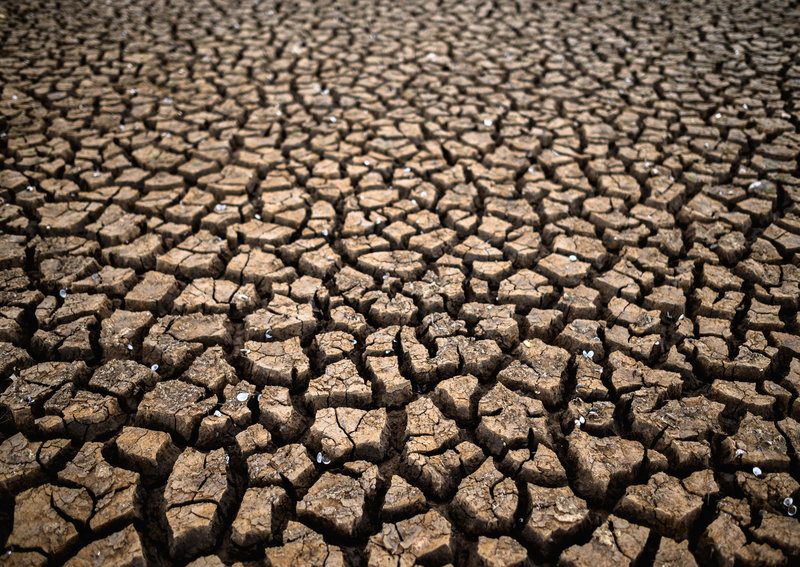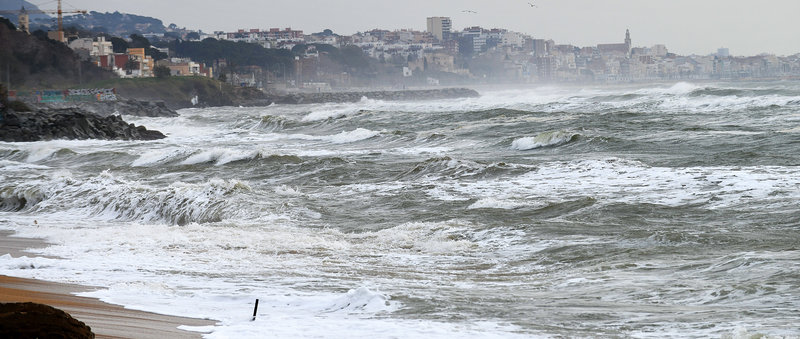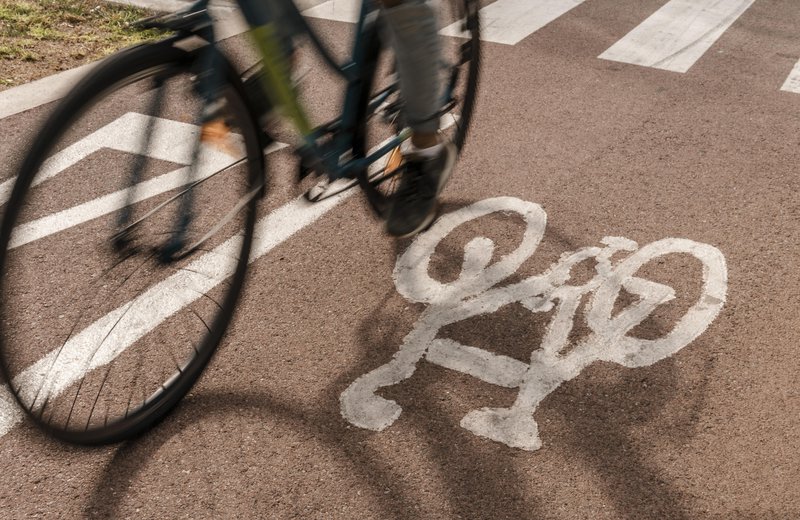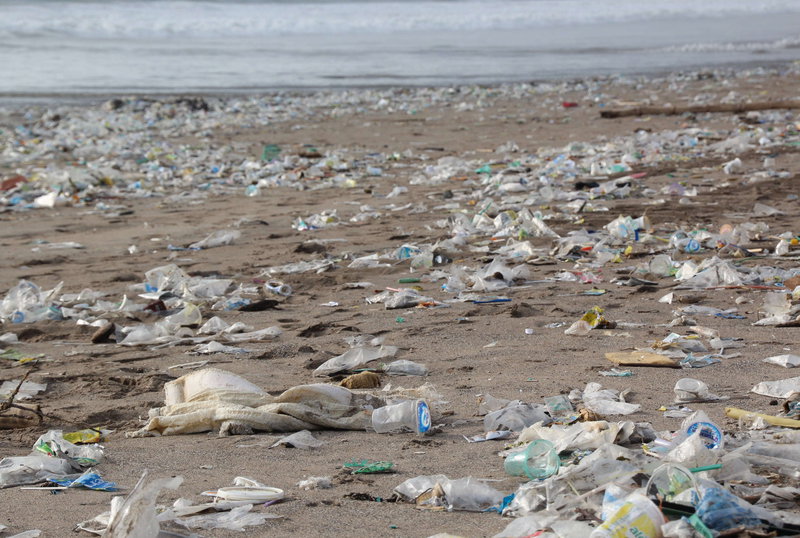Ten challenges of the climate emergency
The warming of the planet due to human activity is the main challenge we face as a species. It is no longer a question of the future, but of the present, making adaptation essential
The hellish summer of 2022 was just the first of many to come, as scientists have been warning for some time
Last summer was the hottest since records began, and we experienced heat waves, major forest fires, and sea water temperatures at an all time high. For many it was the year in which the climate emergency became a reality that can no longer be ignored. Yet now that winter is upon us, it is all too easy to forget the sleepless tropical nights, the cases of heatstroke, the impossibility of being outdoors in the middle of the day that were daily occurrences just a few months ago.
It is understandable that people refer to last summer as a catastrophic period that thankfully has now been overcome, a post-pandemic misfortune that we can put behind us, without seeing that the hellish summer of 2022 was just the first of many to come, as scientists have been warning for some time. There is no reversing the warming, and so it is important to acknowledge the challenges we are already facing in this climate emergency. We should also remember that, according to the UN’s Intergovernmental Panel on Climate Change, the 3.3 billion people most vulnerable to the worst scenarios are from poor and undeveloped communities and are also the people who, due to their poverty, have contributed least to the warming.
In the following pages we review some of the main issues that should concern us. They are all areas in which we will soon see – or are already seeing – changes that will affect our daily lives. From the most basic and urgent, such as water management, to particular one-off issues, such as the notifications we will receive on our mobile phones warning us of extreme weather. All are situations that will require us to adapt the way we live as a society, along with one of the most important strategies all of us as individuals have for facing the climate emergency: mitigation. By making changes to our habits and behaviour, we can all help to reduce the impact of this global emergency.
feature Environment
feature Environment
feature Environment
Feature Environment
1 Managing water
“We’re flushing many litres of water down the toilet, quality water that we could consume”
The comforts we enjoy and our way of life would be unimaginable without water,” explains the director of the University of Girona’s Water Campus, Clàudia Fontàs. Improving how we use and manage this indispensable natural resource is absolutely essential, as it will become increasingly scarce in the future. “Society has pretty much accepted the fact that we will have shortages but we are deceived by episodes of heavy rain. The rainfall averages may make it seem like it’s raining as it always has, but that’s not the case, the way it rains now has changed,” she explains.
There is increasingly less fresh water available. “We must optimise this resource. To begin with, the distribution networks must be optimised so that there is not so much water loss. This is water that has been treated but that’s lost along the way,” she continues. The National Institute of Statistics estimates that 14% of the drinking water available in Catalonia in 2020 was lost for this reason.
“This first step, ensuring that the water in the rivers and reservoirs is not lost, is the simplest. It’s true that significant investment is needed, but technically speaking it’s not a problem. It is the first logical action to take, and it doesn’t require technology or public support,” Fontàs adds.
A little more complicated, but equally necessary, is recovering and improving aquifers. An example is the case of Caldes de Malavella (in the county of La Selva), where there are thermal springs with water that cannot be used because it naturally contains elements such as arsenic. “Perhaps we will have to find a way to exploit this source as we cannot let this type of water go to waste,” says the UdG professor, who is a chemist and expert in systems detection and the elimination of pollutants in water.
“A lot of research has to be about developing the right technologies to treat water, depending on the problem, because in times of scarcity it is not logical to overlook what we have at hand and go looking elsewhere,” Fontàs says. In this regard, we need only remember that there was a proposal to ship in water from France during the drought of 2008.
“Strategically, this should not be allowed. We must be self-sufficient, as we are now seeing with energy,” she insists. Systems will also have to be sought to take advantage of the rainwater that is lost. We might expect to see the hard public spaces that have been built in many cities and towns once again become soft, with trees and vegetation that help avoid damage and water loss when it rains a lot.
Another important element that cannot be wasted is water that has been through sewage treatment plants. In Catalonia, much of this regenerated water ends up in the sea, with only 8.6% used to refill rivers or aquifers (in Israel, for example, 90% of water from treatment plants is reused for agricultural purposes). “And we’re flushing many litres of fresh water down the toilet, quality water that we could consume. It shouldn’t be like that. Luckily, we’re in a developed country and we have everything we need to reuse water,” says Fontàs.
One change that will come sooner or later is dual water systems in homes that separate water according to its uses: potable water for drinking, cooking and hygiene activities; and regenerated water to refill the toilet cistern, for example.
“The problem we have with drinking water is that the price is too low. While this certainly facilitates our human right to have access to this indispensable resource, it does not reflect what water is really worth, and all the effort that goes into providing it. We treat water as if it were an unlimited resource, but it’s not,” laments Fontàs.
3 Changes in the landscape
Insects are changing their reproductive cycles due to earlier springs and summers
Natural systems and the landscape are adapting to climate change faster than we are. “They react in a more immediate and direct way and so can be more clearly seen than in human societies. In fact, the simplest organisms tend to adapt more quickly to changes in external stimuli,” says geographer Albert Llausàs, professor and researcher at the University of Girona.
Studies carried out in the Montseny massif, where the different layers of vegetation are shifting, provide and example. “Tree species are increasing. If a beech wood used to be at 600m, now we find beech trees below 700m altitude,” explains Llausàs.
This adapting to changes more quickly can also be seen in insects, which are changing their reproductive cycles due to earlier springs and summers. The same goes for the birds that eat these insects, which also have to adapt their life cycles to this new rhythm.
“There is a lag. By the time plants produce food for insects and therefore for birds, they haven’t yet reached their peak. This disrupts the ecological functioning of the systems,” adds the researcher, who points out that species could even disappear.
The situation for humans is more complex, as we live in a society that finds it difficult to respond to climate change directly because we depend on artificial resources, such as infrastructure, air conditioning or heating. But if we pay a little attention to our surroundings, apart from the extreme weather episodes we have witnessed, the evidence is becoming obvious. Anyone who spent any time in natural areas this summer will have seen trees and plants dead from drought and high temperatures, and providing the fuel for the large wildfires that are predicted for the future and against which new strategies will also need to be found.
2 New crops
This year, the cereal harvest in Catalonia has been reduced by 32% compared to last year
Periods of drought, higher temperatures and rising sea levels are already forcing us to rethink farming in our country. This is a key economic sector that is far from self-sufficient: only 40% of the food we consume is produced here. It is a low number that could go down further if measures are not taken.
Due to irregular rainfall, rainfed crops will be the most affected: this year, the cereal harvest in Catalonia has been reduced by 32% compared to last year, and the IRTA research institute is already seeking new varieties of crops better adapted to future scenarios.
Another sector in transformation is the winegrowing industry, which forecasts a reduction in production. It is estimated that in 2030 twice as much water will be needed in the Penedès region. Experts say it is possible to maintain production with the use of irrigation systems, but they must be well-planned and used sparingly, as water will have to be managed very carefully.
As well as planting more resistant varieties, vines will be planted further apart so that they do not compete with each other for water. Vineyards will also have to be planted on flatter ground to make better use of rainwater. Another option is to move vineyards to the Pyrenees mountain regions.
Meanwhile, the relocation, rotation and mixing of crops is inevitable, as well as changing sowing schedules, choosing better adapted local varieties and providing artificial shade for sensitive crops during dry periods.
As for livestock, it will be subject to adverse weather conditions that may increase illness and spread disease. The good news is Catalonia’s good research. “We need to look for more sustainable food production systems,” Barcelona University researcher Joan Romanyà said recently at a talk. One of these systems is regenerative agriculture. For 80 years, intensive exploitation and the use of chemical fertilisers have greatly degraded the soil. Yet this new practice integrates different systems to help regenerate the soil.
4 Less beaches
If the coast were not so urbanised, adapting to the effects of climate change would be simpler
Catalonia has 256 kilometres of beaches, mostly in urban areas. These beaches are limited by promenades, streets and railways, and experts say they are already suffering the effects of climate change.
Since the nineties, the meteorologist Josep Pascual has collected data on the state of the sea in L’Estartit. In this time, he has monitored the movements of the beach between the Garbí breakwater and the Begur coast. The result is that the destruction caused by the sea is 60 centimetres per year.
“The sea is putting pressure on the natural systems of Baix Ter, but also on human systems. The Griells residential development is an example. Every time there’s a strong storm, the beach disappears. It’s clear evidence,” warns the geographer Albert Llausàs.
The problem is that much of the population lives near the coast, which is where most of the mainstay of the country’s economy takes place: tourism. If the coast were not so urbanised, adapting to climate change would be simpler. The beaches would recede along with their dune systems, while the lagoons, marshes, and wetlands would end up occupying other spaces. But with a coast under so much human pressure the situation gets complicated.
“It is a major challenge,” adds Llausàs, “at the moment we’re seeing that there’s no long-term thinking. Adaptation is reactive and only an immediate response to disasters, such as Storm Glòria, and so urban areas become flooded.”
The economic pressure means that not only does it not pay to de-urbanise the coast, but concessions are being extended to campsites, restaurants, pubs, yacht clubs, diving centres, without looking at how their activities will be affected in the future.
As for coastal environments with little urban pressure, such as in the Ebre delta, the rise in sea level and the fact that the River Ebre does not carry enough sediment because of decreased flow accelerates the receding of the coast. At the mouth of the river, every year the coastline retreats more than 10 metres. Meanwhile, the mouth of the River Llobregat has receded by almost a kilometre during the past century.
6 Energy transition
Catalonia should reach 2030 with half of its energy coming from renewable sources
According to EU goals, Catalonia should reach 2030 with half of the energy it consumes coming from renewable sources. This is a vital first step to becoming carbon neutral by 2050, which is to say without adding more CO2 to the atmosphere than the soil, forests and seas can naturally absorb. It remains to be seen whether these aims are met because a number of years in promoting renewables have been lost. Data from the Efficient Energy Cluster of Catalonia says the main source of energy continues to be nuclear (52%), which produces seven times more energy than hydro, nine times more than wind and over 60 times more than the contribution made by solar.
While the debate continues on how to implement wind and solar farms, and what role is to be played by the new public company created by the Catalan government, Energética, it is clear that self-consumption will need to be promoted, which, according to the government, could come to generate half the energy needed. The surface area available in Catalonia for solar self-consumption is 22,000 hectares (basically on roofs), although currently less than 90 hectares is occupied. To reach the 2050 objectives, the 17,000 installations registered today will have to be multiplied by 150. However, as the Federation of Installers’ Guilds warns, there is a lack of qualified personnel to cover the expected demand.
7 New mobility
The “15-minute city” is the idea that most daily necessities can be covered within walking or cycling distance
One aspect of daily life that must inevitably change to deal with the climate emergency is mobility. Moving people and goods from one place to another, even from one end of the world to the other, is at the root of the problem. Yet there are some simple points where a lot of progress could be made. For example, having our work, school, doctor, shops, leisure facilities closer to us. This is the thinking that led to the concept of the “15-minute city”, the idea that most daily necessities can be covered within walking or cycling distance of the homes of urban residents. It is also an idea that gained strength during the pandemic and with the spread of teleworking.
“Another change will be to share journeys. The less energy we use to move, the better. A good option is the bicycle, which we move with our own energy. But when that’s not possible, we need to be able to travel on buses, trains, trams or shared vehicles, so that the energy expenditure per person is reduced,” explains Adrià Ramírez, president of the Platform for the Promotion of Public Transport (PTP).
It is important to electrify vehicles to stop pollution and to be able to take advantage of renewable energy sources. Small shared rental electric cars could be a good solution when there are no other options. Yet the most effective solution will be trips on platform-type public services.
“When you have thousands of people who have to enter Barcelona every day at rush hour, you have to be able to offer very long trains with many carriages. And with good connections with buses, the metro, trams…” adds Ramírez.
The PTP is calling for measures such as fare integration, unifying criteria and creating a single ticket for all types of transport, with a price based on the kilometres you travel, but that is affordable for everyone, and with discounts for vulnerable groups. At the same time, the sustainability of the system must be ensured, and the PTP is considering supporting fees for the use of the road network. Improving and creating new intercity bus stations is another claim. “In Barcelona, at least four more should be made, for all ways into the city and with connections to the metro lines,” adds Ramírez. Finally, they are calling on the Spanish government to decentralise and improve the railway network, and for buses and trams to be extended to places where there is not enough of a critical mass to justify trains. An example is the Costa Brava tramway, which could link Girona with the Baix Empordà coast, since of all the Catalan regions without access to any railway service, it is currently the most populated.
5 Health risks
Scientists recommend more monitoring of diseases borne by vectors such as mosquitoes
The Third Report on Climate Change in Catalonia says there are 300 deaths every summer as a result of the heat. Experts warn that by 2050 the number could multiply by eight, which would mean over 2,500 deaths. To that will have to be added the deaths due to the cold among people suffering from energy poverty. There is also air pollution, which causes 3,500 premature deaths every year. The report highlights the need to improve air quality, reduce traffic and create more green spaces in cities, which would also help modulate temperatures.
Scientists also recommend more monitoring of diseases borne by vectors such as mosquitoes, ticks and fleas. The diseases of most concern are dengue, malaria and chikungunya, all three carried by mosquitoes, which will become with the rising temperatures. The proximity to Africa, globalisation (and people travelling to endemic areas) and the abundance of mosquito species are all reasons why diseases are expected to spread.
10 Reducing waste
Waste treatment in Catalonia generates some 5% of the greenhouse gases that the country emits
The best waste is that which is never produced, which means that in the 4R principle (reduce, reuse, repair, recycle), the most important is the first. Yet while reusing resources is essential, recycling also involves energy expenditure. Waste treatment in Catalonia generates 5% of the greenhouse gases it emits. Also, the use of plastics leads to pollution that affects the whole planet (microplastics has been detected in human placentas). Eliminating plastic bags was a big step but more needs to be done, including returning to reusable bags, buying in bulk, reducing packaging and repairing goods rather than replacing them. Another aspect is that industrial manufacturing requires large amounts of water. For example, to manufacture a one-litre capacity plastic bottle requires three litres of water.
9 Curbing consumption
Degrowth is about curbing excessive consumerism and moving towards a more socially just economic system
A sustainable world depends on a change in the economic model. Western economics is based on the concept of continuous growth. This system is not sustainable. We only need recall the 1972 report, The Limits to Growth, in which MIT researchers warned that if the same rate of growth continues, it will take a century to reach the point of collapse. They weren’t far wrong (except they predicted global cooling instead of warming). During the 1990s, the idea of degrowth took hold: curbing excessive consumerism and moving towards a more socially just system, and preserving the environment and avoiding major inequalities. Some are already taking the initiative: reducing non-vital purchases, eating less meat, taking holidays without going to the other side of the world, repairing what can be repaired, renting or sharing devices and using them only when needed, etc.
8 (More) mobile dependency
To reach as many people as possible, a mass notification system on mobile phones is currently being tested
Climate change is already here and we are seeing its effects in our everyday lives. We see that the characteristics of certain phenomena have changed. The rains have become more severe, more torrential and sudden, and this also means that there is more difficulty in forecasting the weather,” says Mercè Salvat, the director general of the Civil Protection agency.
As well as this, these phenomena can also be very localised, and this can generate even more serious consequences due to the problems of predicting them. This was seen recently with the Maresme floods in September or the Bisbal hailstorm in August.
“People must understand that there will be more of these types of local phenomena and so it will be necessary to act quickly and become aware of the dangers, to safeguard people and business. Awareness of the risk is fundamental,” insists Salvat.
The Civil Protection head says considerable progress has been made in raising awareness in the case of fires, but it is still a pending subject where water is concerned.
“We must remember that with floods, we cannot know for sure how deep or how strong the water is, therefore, even if it seems that there is no danger because you have spent your whole life using the same path, it would be better to look for an alternative route,” she adds. And obviously, you must always be careful in flood prone areas. “You may want to cross a waterway and at that moment it might not even be raining, but with these sudden phenomena the water can suddenly appear from nowhere because it is raining higher up,” insists Salvat.
It is estimated that floods will cause 85 million euros in material losses every year in the next decade, which means everyone needs to be aware of basic precautions: not crossing fords, streams and other waterways in the car, not trying to remove vehicles from basement garages when it is raining, and to get out of a car immediately in the event that you are inside a vehicle during a flood and it begins to float. It is also necessary to take precautions during strong winds (removing elements that could be blown away), hail (seeking shelter) and electrical storms (avoiding places where there is water, metal or trees).
To anticipate floods as soon as possible, the Civil Protection agency, the Meteorological Service, the Catalan Water Agency and the Ebro Hydrographic Confederation all coordinate in order to be able to alert the affected municipalities and the public, as well as posting warnings on social media.
In fact, to reach as many people as possible, a mass notification system on mobile phones is currently being tested, which if all goes will undergo further trials in a simulation of a chemical accident in Tarragona. “There is a European directive that calls on member states to implement this type of system. With the system that is in the testing phase, we, as Civil Protection, will be able to notify the public,” says Salvat. Mass alerts will use geolocation to send alerts to mobile phones in areas where there is an active emergency situation, be it storms, torrential rains, snow, hail, fires, toxic leaks or any other potential catastrophe.
These alerts in the form of a shrill alarm sound will work independently of the telephone company, and will sound even if the mobile is on silent mode. And they won’t stop until the user actively confirms that they’ve seen the notification. “We believe it will be a very important tool that will add another layer of security to all the other ones we have,” Salvat concludes.










